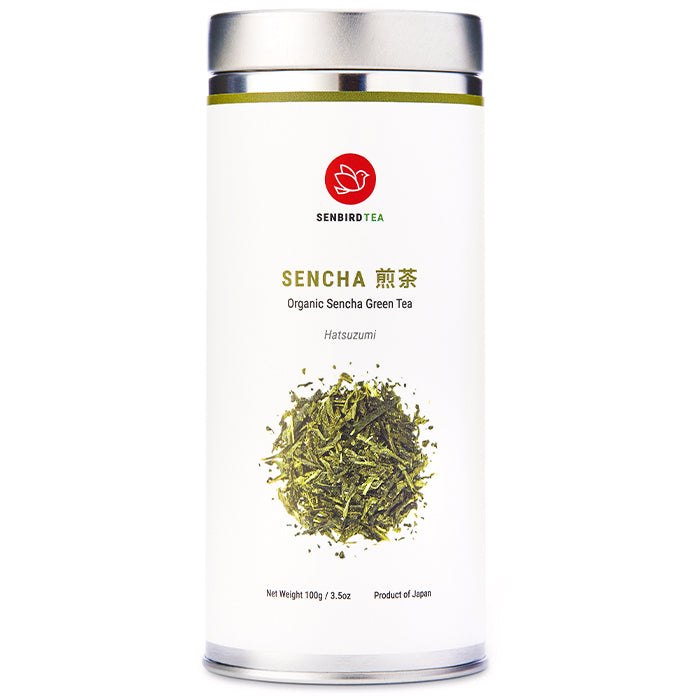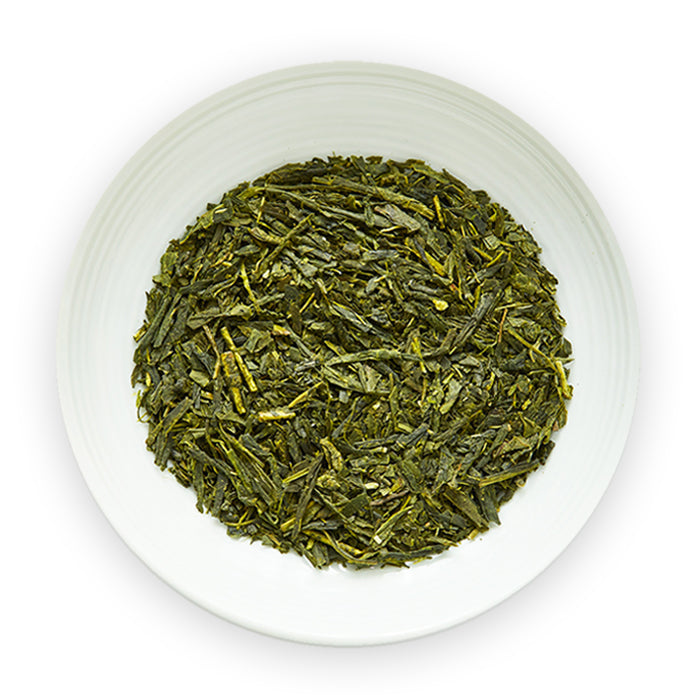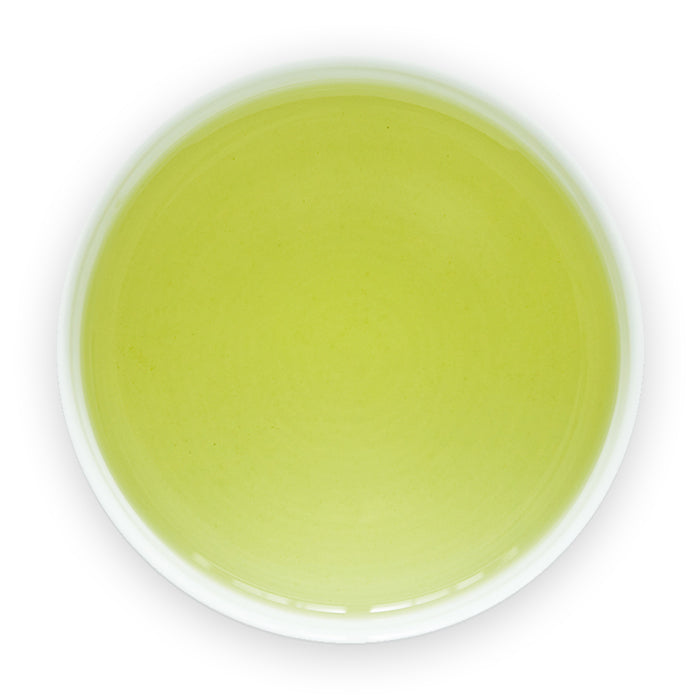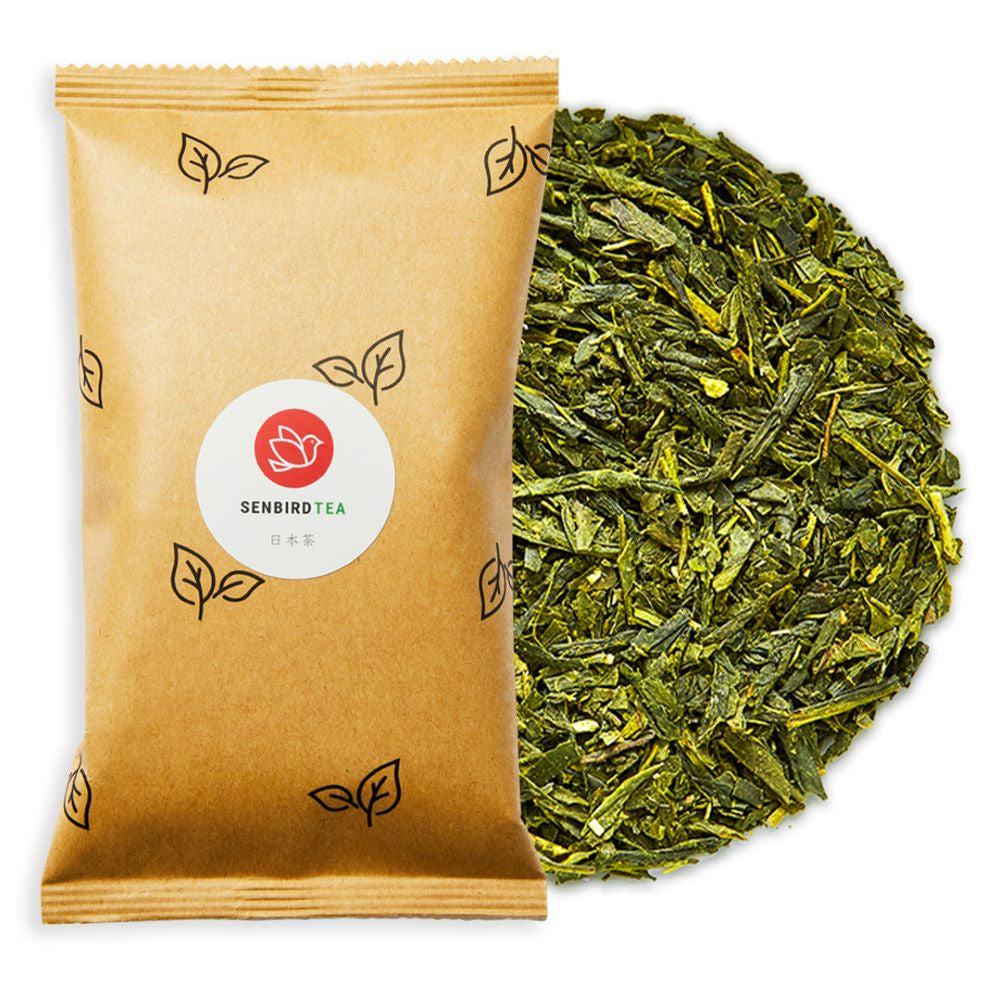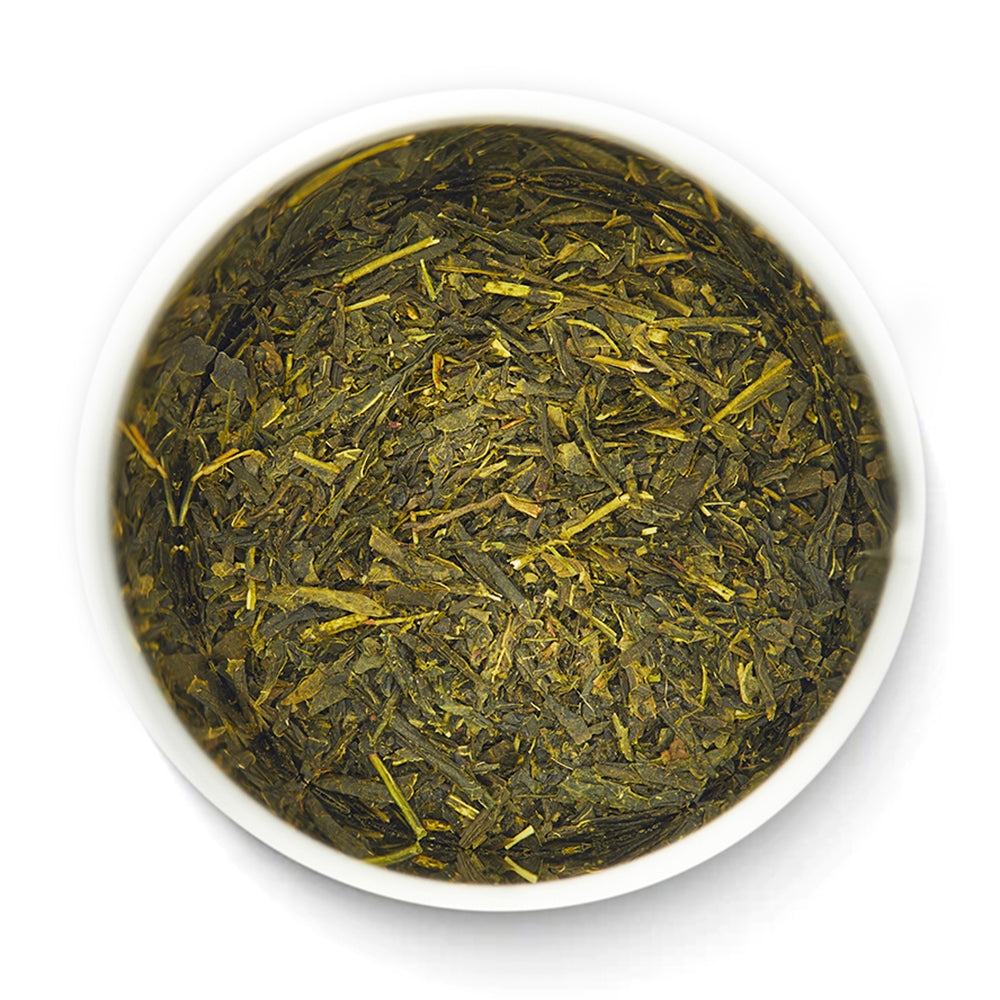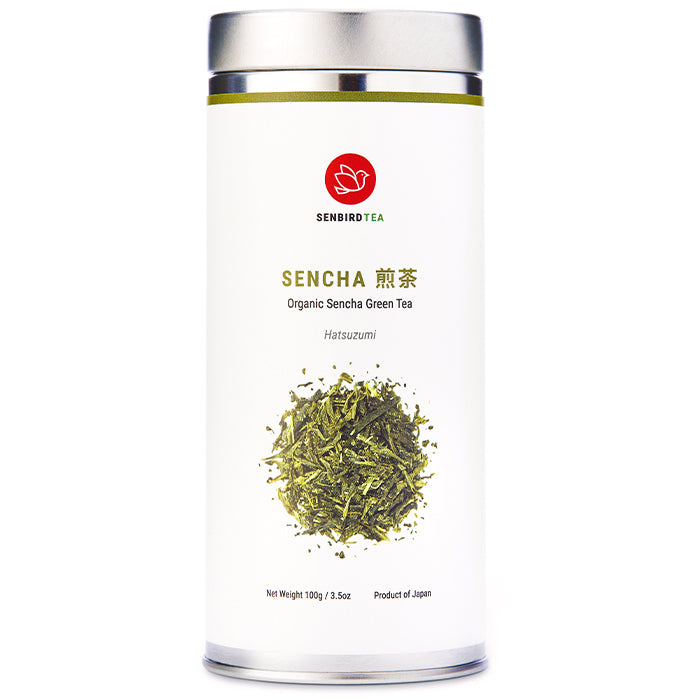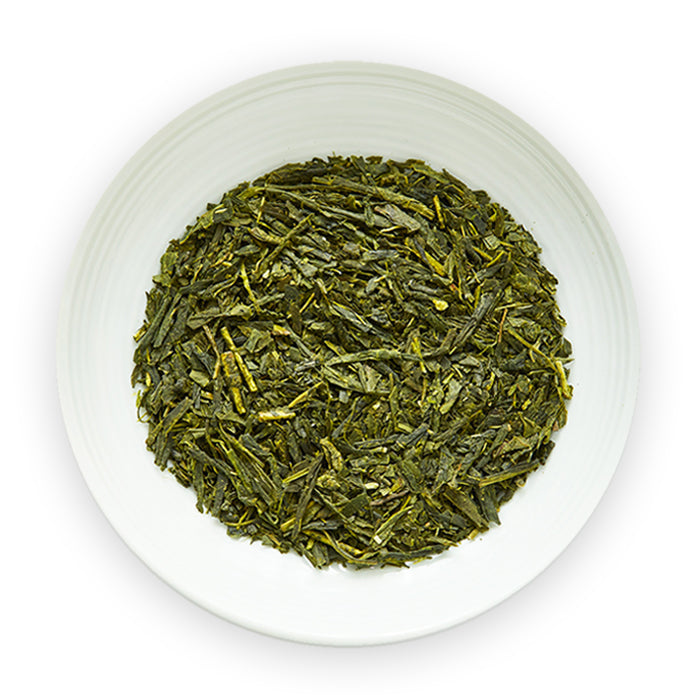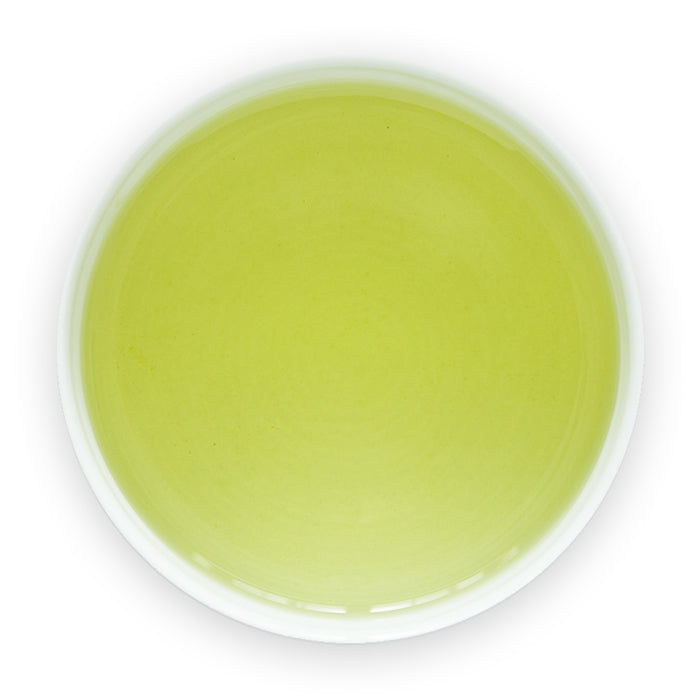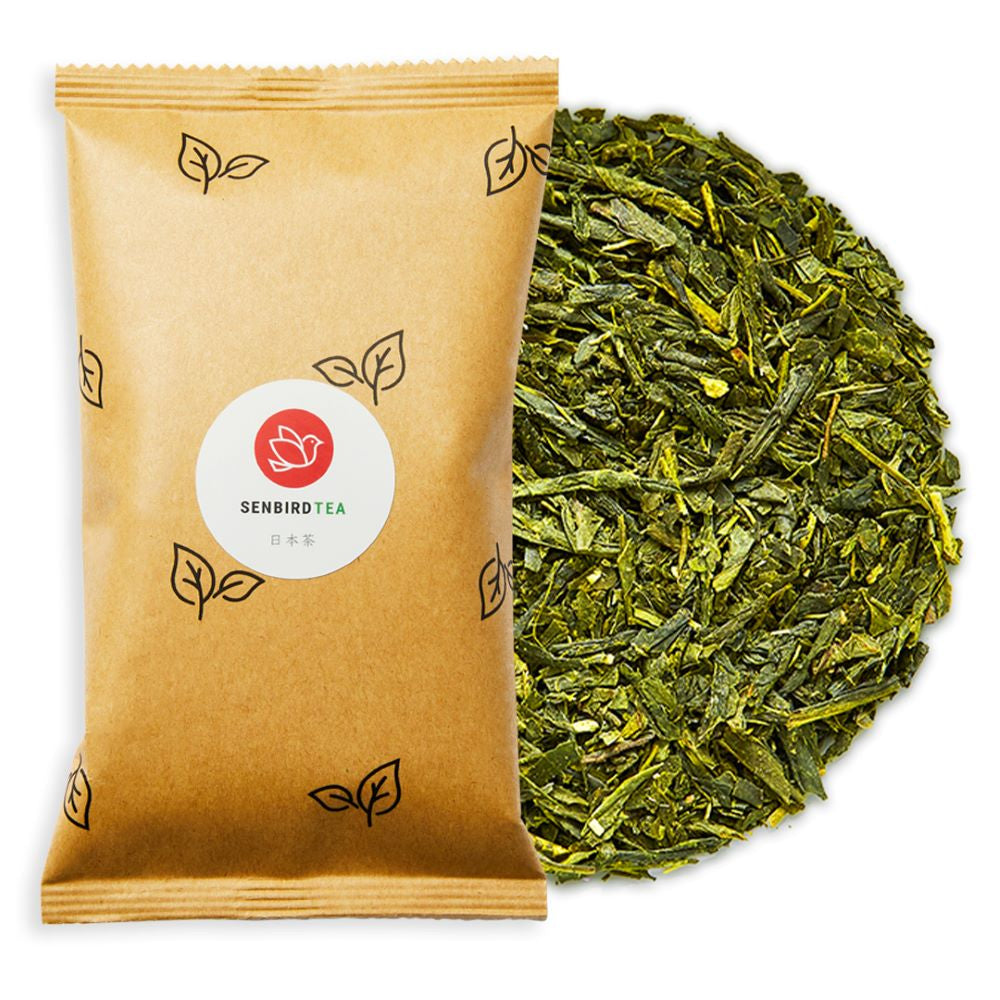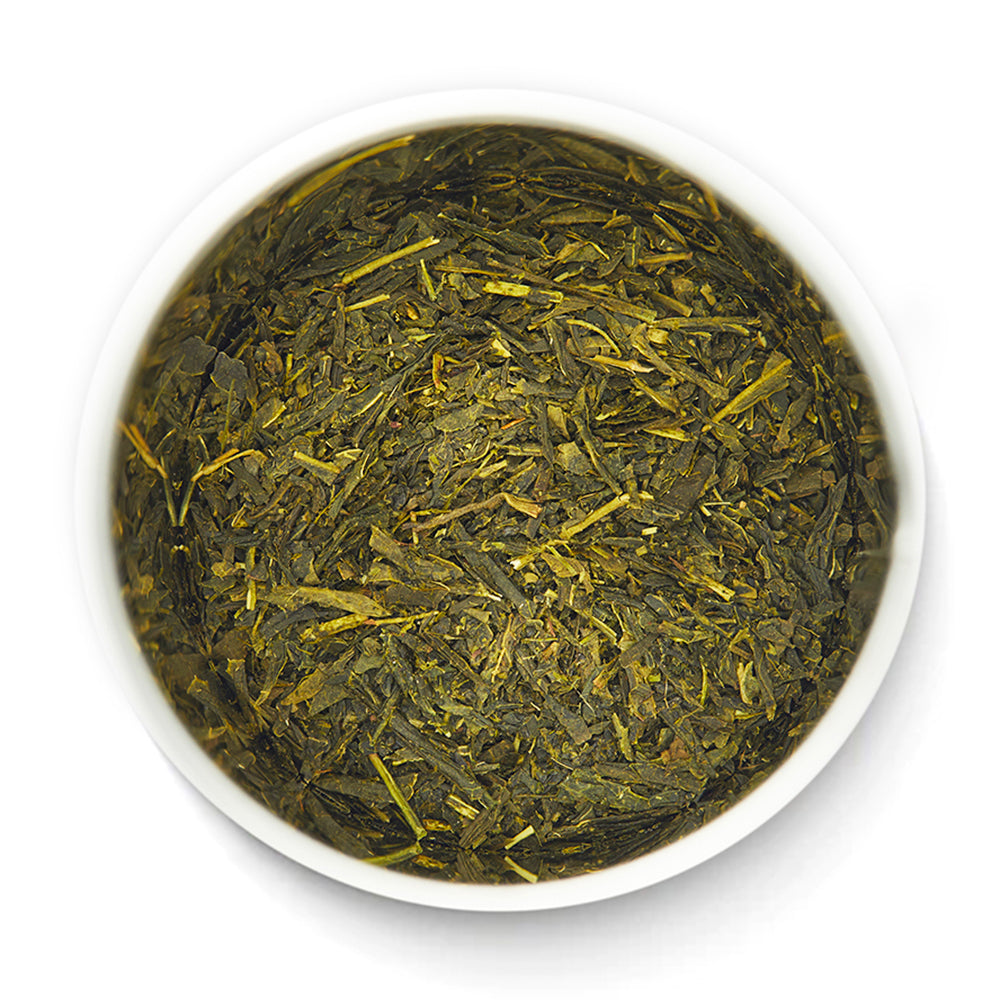
Ultimate Guide to Japanese Green Tea
Green tea is one of the most popular teas among tea drinkers. Originating from China as a key component of traditional medicine, people widely recognize green tea or its health benefits. They enjoy its natural energy boost and refreshing, delicious taste. Now, with our comprehensive Japanese Green Tea Guide, you can explore the intricacies of green tea, especially in Japan, where it is one of the most commonly consumed beverages in the world.

Green tea history in Japan
For the most part, Sencha green tea is the most popular tea in Japan that is available in nearly every restaurant, store, vending machine, and in most homes. However, Japan’s love for green tea started with matcha green tea powder, was introduced during the Kamakura period (1185-1333) and consumed by the upper class during Japanese matcha tea ceremonies, known as Chanoyu (茶の湯) or Chado (茶道).
Today, Japan has become the second-largest green tea producing country, known for producing some of the most unique and highest quality green tea.
Discover how Green Tea is made, the health benefits, the varieties of flavors from Japan, and how to brew the perfect cup.

What is green tea?
Green tea uses the leaves of the tea plant, Camellia Sinensis. Additionally, the leaves from this plant make other teas as well, including black tea, oolong tea, pu-erh, and white tea. These are called “true teas” since they are the only types of tea using the actual leaves of the tea plant.
Other types of tea often use stems, flowers, roots, and leaves of other botanicals and plants, creating blends or herbal teas that vary in flavor, aroma, texture, and benefits.

How is green tea made?
Due to the climate and geographical conditions, the top regions in Japan for producing high-quality green tea are Shizuoka, Kagoshima, Mie, and Kyoto. In particular, most of Japan’s expensive premium teas are still from Uji, Kyoto. But Shizuoka Prefecture, home to Mount Fuji, is still the largest tea-producing area, which accounts for 40% of all of Japan’s sencha production.
To make the classic Japanese green tea, the tea leaves are first harvested from the Camellia Sinensis plant, then steamed to prevent further oxidation and fermentation. After all, this ensures that the tea leaves retain their green color, nutrients, and fresh flavor. After steaming, the tea leaves go through cooling to remove excess water, followed by a first rolling and drying using strong pressure from hot air. Lastly, the tea leaves are pressed and rolled with more heat until it takes on a thin needle-like shape, ending with drying.

What does green tea taste like?
Depending on the origin and production process, the taste of green tea is often described as vegetal, grassy, and mild. In fact, Japanese green tea is famous for its wide variety and range in astringency and bitterness.
Generally, most green teas brew a light yellow to pale green color but depending on the variety of the green tea, it can brew a deep emerald green to light brown color. However, matcha green tea powder is distinct in color, taste, and texture. High-quality matcha brews an opaque bright and vibrant green hue and is known for its rich and bitter umami taste.

What are the health benefits of green tea?
In general, Green tea is popular for its remarkable health benefits. Coupled with numerous studies, research claims that regular green tea consumption with healthy exercising and eating habits support a longer life expectancy. Research finds that green tea improves blood flow, lowers cholesterol, improves brain function, lowers the risk of heart disease, and more.
Healthy compounds found in green tea include polyphenols, which reduce inflammation, catechins called EGCG, which prevent cell damage, and amino acid, l-theanine, which aids in brain function. In addition, not only is green tea rich in antioxidants, nutrients, and minerals, but other general health benefits associated with green tea also include:
- Anti-inflammatory properties
- Anti-bacterial properties
- Anti-aging properties
- Protect against cancer
- Prevention of neurodegenerative diseases
- Prevention of virus infections
- Aid in weight-loss
- Prevention of tooth decay

How much caffeine is in green tea?
Ultimately, the caffeine level varies depending on the type of green tea, but overall one serving of loose leaf green tea or matcha (30-80mg) is less caffeinated than a cup of coffee (95-165 mg of caffeine). On the other hand, Gyokuro shade-grown green tea has nearly double the caffeine content of a cup of regular coffee.
The natural caffeine in green tea is a powerful stimulant for mental clarity to keep you alert and focused. Coupled with the amino acid, l-theanine which boosts dopamine and alpha wave production in the brain, research shows that green tea is a particularly powerful brain booster with anti-anxiety effects, minimizing the jitteriness that may occur from drinking coffee. Many green tea drinkers report more stable energy and productivity levels, compared with coffee.

What are the types of Japanese green tea?
Sencha - Classic green tea
Sencha is the most common classic green tea with a bright green color. Green tea is now an important part of Japanese culture, where it is present in almost every home, restaurant, or office. With a moderate amount of caffeine, a cup of hot or cold sencha is perfect to start your day with or to enjoy during or after meals to cleanse your palate.
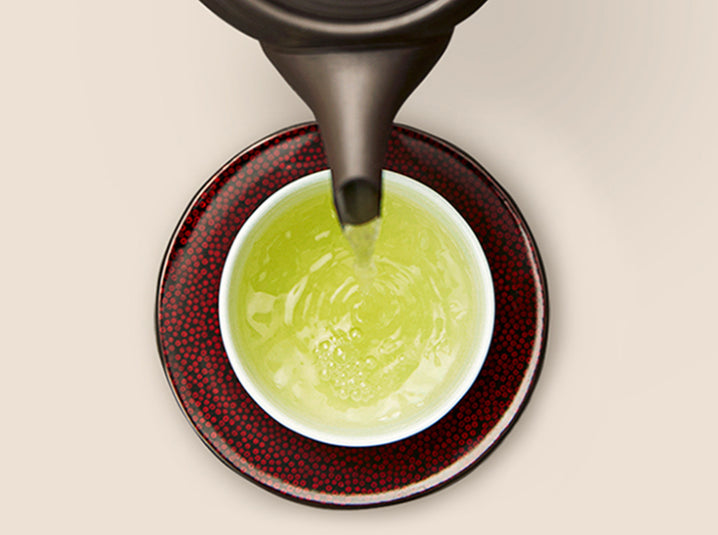
Fukamushi Sencha - Deep steamed green tea
Fukamushicha or Fukamushi (深蒸し) sencha is a deep steamed green tea, the signature style of green tea in Shizuoka. In other words, while typical sencha is steamed for 60 seconds, fukamushicha is steamed for longer, usually 90-120 seconds. As a result, the tea leaves break down into smaller pieces with some fine powder, brewing a dark vibrant green hue with a deep, rich taste with no astringency.
Kukicha / Boucha - Twig green tea
Kukicha (茎茶) or bōcha (棒茶) is a Japanese tea blend of stems, stalks, and twigs and tea leaves that come from the remaining production of sencha or matcha. In general, kukicha has a mild nutty and subtly sweet flavor and is low in caffeine.

Genmaicha - Brown rice green tea
Genmaicha (玄米茶) is a Japanese tea blend made from mixing green tea leaves with roasted brown rice. It is often made with sencha or bancha green tea and roasted rice. Some blends may mix in matcha green tea for a boost in flavor, nutrients, and color, known as matcha iri genmaicha (抹茶入り玄米茶). This mild green tea is popular for its toasty flavor and fragrant rice aroma from the popped roasted brown rice, which mellows out any astringency or bitterness from the green tea.

Hojicha - Roasted green tea
Hojicha (ほうじ茶) or houjicha, a roasted green tea, made by slow-roasting dried green tea leaves, stems, stalks, or twigs. The high heat roasting changes leaf color from green to reddish-brown,creating a low-caffeine, toasty green tea. Hojicha flavor ranges from toasty, nutty, and earthy to lightly sweet and caramel undertones. Hojicha powder is popular for its simplicity: just whisk it into water.
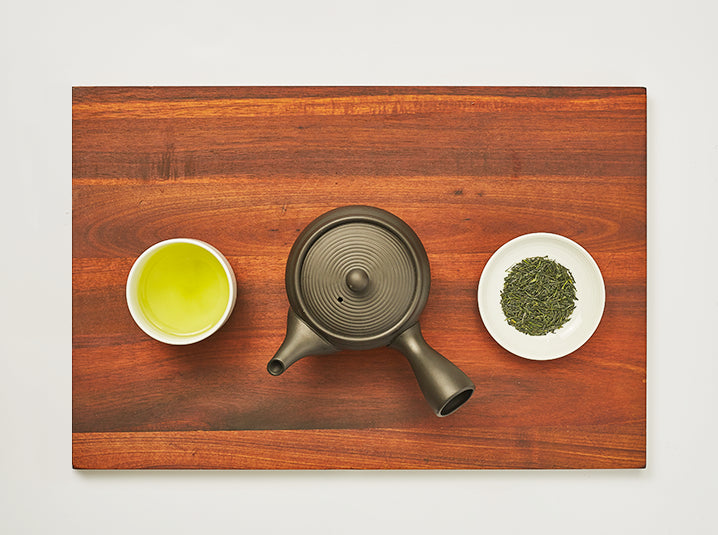
Gyokuro - Shade-grown green tea
Gyokuro (玉露) is a rare, delicate, and premium quality green that is grown in the shade. It translates to “jade dew”, named after the pale green liquor that is buttery smooth with a delicate sweetness. Each yearly harvest yields small quantities of this fragrant high-quality green tea. The shading process on Gyokuro tea leaves increases the theanine, caffeine, chlorophyll, and nutrients in the tea leaves. In fact, this results in an energizing green tea that is naturally sweeter, grassier, and rich in umami.

Matcha - Green tea powder
Matcha (抹茶) is a finely ground green tea powder from tencha tea leaves grown in the shade for three to four weeks. Since matcha uses shade-grown tea leaves, it is rich in amino acid theanine and naturally high in caffeine. Traditional Japanese tea ceremonies serve matcha green tea and focus on the meditative preparation, serving, and drinking of matcha. "Ceremonial grade" indicates that the matcha powder is of a high enough quality for the tea ceremony practice. Nowadays, matcha is in desserts and baked goods, and popular drinks such as matcha lattes and cocktails. Matcha is popular for its rich consistency and grassy umami taste.

How to brew loose leaf green tea?
Since green tea is delicate, most varieties taste best when steeped for one minute or less. In particular, over-steeping or steeping too hot results in a bitter and astringent brew. Indeed, to brew a perfect cup of loose leaf green tea, you’ll need a teapot or fine mesh tea strainer. Now, most tea varieties are conveniently available in tea bags too. Just look for tea shops that fill the teabags with whole leaf tea.
At Senbird, we offer organic whole leaf tea from family-run Japanese tea farms, packaged in sustainable refillable tea tins. We recommend using a traditional Japanese kyusu teapot for brewing since they are designed for green tea. The kyusu teapot provides enough room for the tea leaves to expand, releasing more flavor and nutrients into every cup.
Sencha - Classic green tea
- Color – Light yellowish-green
- Flavor – Fresh vegetal, aromatic, and mildly sweet
- Brew time – 45 seconds to 1 minute
- Brew Temperature – Tempered hot water (not boiling) at 70-80 °C (158-176 °F)
- Tea Leaves Amount: 1 teaspoon per cup
Genmaicha - Brown rice green tea
- Color – Light yellowish-green
- Flavor – Toasty, vegetal, and mildly sweet with rice aroma
- Brew time – 1 to 1.5 minutes
- Brew Temperature – Tempered hot water at 82°C (180°F)
- Tea Leaves Amount: 1 teaspoon per cup
Hojicha - Roasted green tea
- Color – Golden brown to dark brown
- Flavor – Roasty, earthy, toasty aroma
- Brew time – 1 to 1.5 minutes
- Brew Temperature – Boiling water at 95°C (180°F)
- Tea Leaves Amount: 1 tablespoon per cup
Gyokuro - Shade-grown green tea
- Color – Pale green to bright jade green
- Flavor – Delicate, grassy, smooth umami
- Brew time – 2 to 3 minutes
- Brew Temperature – Tempered warm water at 50°C to 60°C (122°F to 140 °F)
- Tea Leaves Amount: 1 teaspoon per cup
Matcha - Green tea powder
- Color – Emerald green to vibrant green
- Flavor – Rich grassy, umami
- Brew time – 1 to 1.5 minutes
- Brew Temperature – Tempered hot water (not boiling): 80 °C (176 °F)
- Tea Amount: 1 teaspoon (3g) per serving
Overall
You can brew all loose leaf green tea up to three times. Sip slowly and enjoy the subtle changes in texture and flavor in each steep. Do you want to enjoy your green tea iced or as a cold brew? Here is our guide for cold brew Japanese tea.
Our mission at Senbird is to you high-quality organic green tea and herbal tea from family farms in Japan. We hope you experience a moment in every cup.
🍵 Drinking our tea? Snap a pic and tag us on Instagram at @senbirdtea or #senbirdtea. We’d love to see your moment with tea!
If you want to read more articles on green teas, check them out here:
- Caffeine in Japanese Green Tea
- Green Tea and its Uses in Traditional Chinese Medicine
- Which Green Tea to Drink in the Morning, Afternoon, and Evening?
- 12 Green Tea Inspired Recipes for Delicious Meals and Desserts
- How to Make Rice Seasoning (Furikake) with Used Green Tea Leaves
- Ochazuke Green Tea over Rice Recipe
- 3 Green Tea and Cheese Pairings that are Surprisingly Delicious
- Green Tea Whiskey Cocktail with Ginseng Recipe
- 3 Ways to use Green Tea Leaves in your Garden
- How to Brew Green Tea with a Yuzamashi
- Shiozuoka's Secret: The Best Green Tea in Japan
Share your moment with us and stay connected on:







